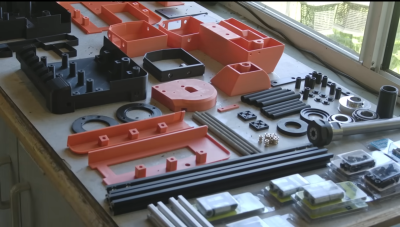Once upon a time, lathes were big heavy machines driven by massive AC motors, hewn out of cast iron and sheer will. Today, we have machine tools of all shapes and sizes, many of which are compact and tidy DIY creations. [Maxim Kachurovskiy]’s Modulathe fits the latter description nicely.
The concept behind the project was simple—this was to be a modular, digital lathe that was open-source and readily buildable on a DIY level, without sacrificing usability. To that end, Modulathe is kitted out to process metal, wooden, and plastic parts, so you can fabricate in whatever material is most appropriate for your needs.
It features a 125 mm chuck and an MT5 spindle, and relies on 15 mm linear rails, 12 mm ball screws, and NEMA23 stepper motors. Because its modular, much of the rest of the design is up to you. You can set it up with pretty much any practical bed length—just choose the right ball screw and rail to achieve it. It’s also set up to work however you like—you can manually operate it, or use it for CNC machining tasks instead.
If you want a small lathe that’s customizable and CNC-ready, this might be the project you’re looking for. We’ve featured some other similar projects in this space, too. Do your research, and explore! If you come up with new grand machine tools of your own design, don’t hesitate to let us know!
Thanks to [mip] for the tip!


















